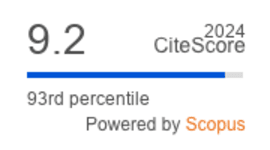Legionella pneumophila — The causative agent of Legionnaires’ disease
DOI:
https://doi.org/10.36877/pmmb.a0000193Abstract
Over the years, Legionella pneumophila has increasingly become a public health threat that causes sporadic and epidemic community-acquired and nosocomial-acquired pneumonia. Thus, this review aims to discuss the current knowledge of L. pneumophila, focusing on the global epidemiology, clinical features, diagnosis and treatment of Legionnaires’ disease (LD). Legionella bacteria are Gram-negative rod-shaped bacteria that are ubiquitous in aquatic environments. L. pneumophila was first discovered in 1976 and recognized as the causative agent of LD. L. pneumophila is a facultative intracellular pathogen that infects and replicates within eukaryotic host cells such as macrophages and protozoan. Diagnosis of LD remains a significant challenge as the clinical manifestation of LD is hardly distinguishable from pneumonia caused by other respiratory pathogens. Therefore, early testing and appropriate treatment are keys to alleviating the rising morbidity and mortality caused by LD.
Downloads
Published
How to Cite
Issue
Section
License
Copyright (c) 2021 Loh Teng-Hern Tan, Wei Yu Tee, Tahir Mehmood Khan, Long Chiau Ming, Vengadesh Letchumanan

This work is licensed under a Creative Commons Attribution-NonCommercial 4.0 International License.
Author(s) shall retain the copyright of their work and grant the Journal/Publisher right for the first publication with the work simultaneously licensed under:
Creative Commons Attribution-NonCommercial 4.0 International (CC BY-NC 4.0). This license allows for the copying, distribution and transmission of the work, provided the correct attribution of the original creator is stated. Adaptation and remixing are also permitted.

This broad license intends to facilitate free access to, as well as the unrestricted reuse of, original works of all types for non-commercial purposes.
The author(s) permits HH Publisher to publish this article that has not been submitted elsewhere.



.png)

.jpg)
